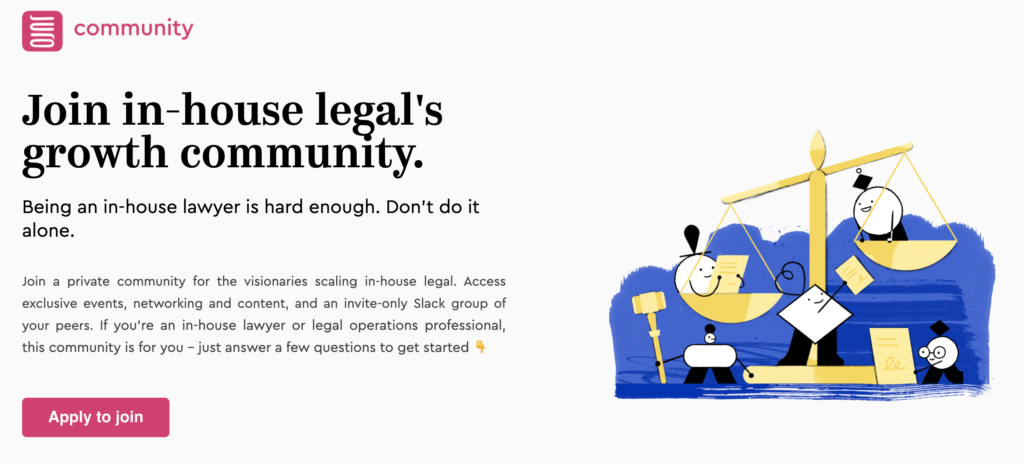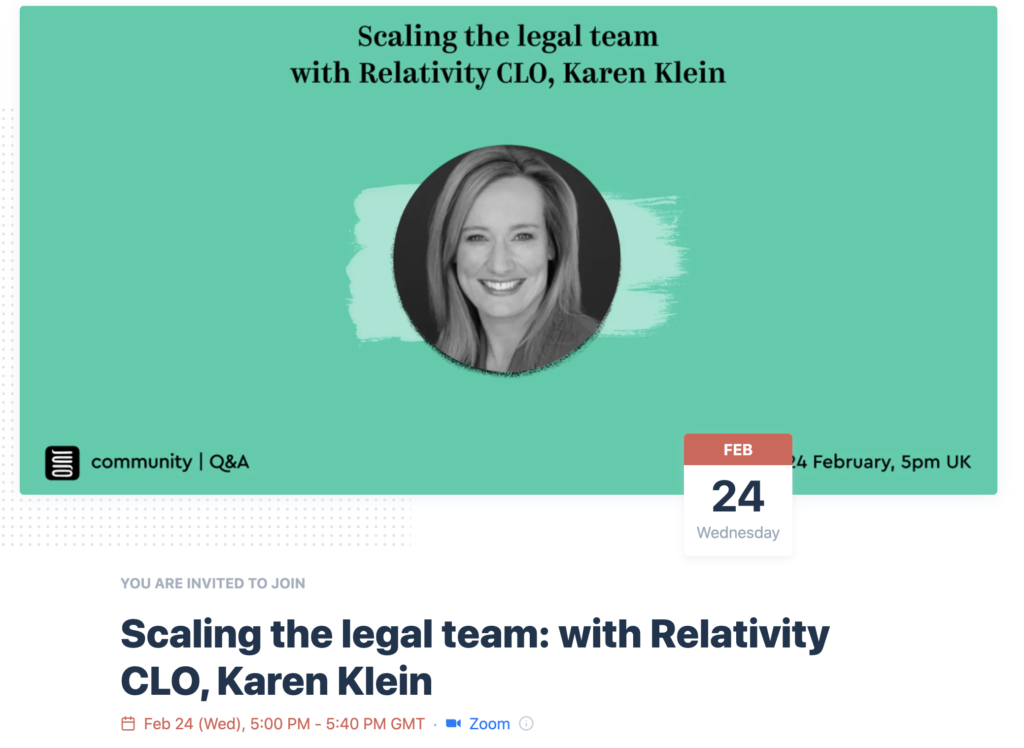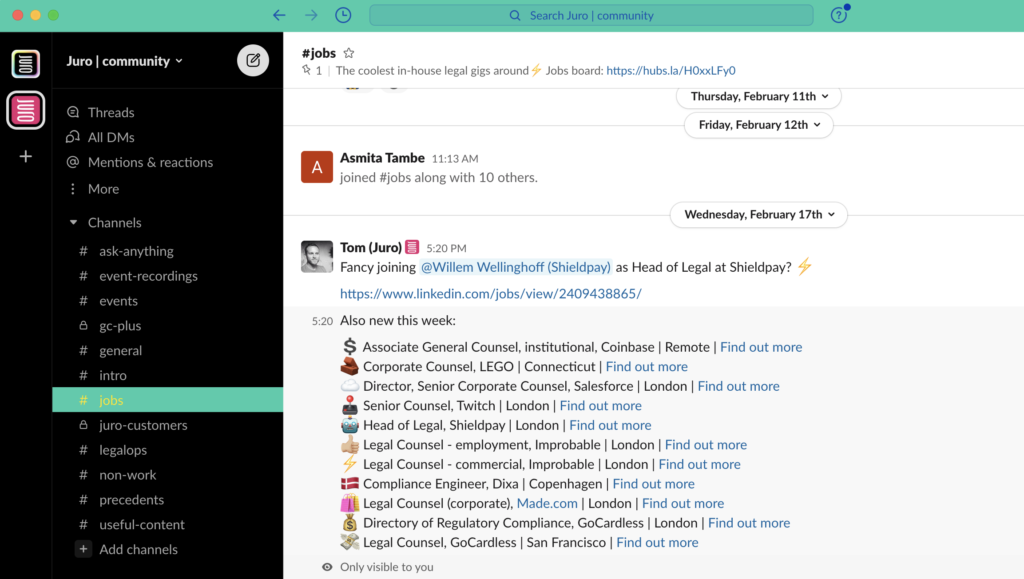Lots of SaaS companies talk about their communities.
Welcome to the [company] community, they say on Twitter, when a new customer comes on board. Thanks to our community of early adopters, they write in a blog post. But what most of these companies really have is a mailing list — people they’ve largely never met who are happy enough to receive emails passively, without ever really doing much.
There’s nothing wrong with that, of course — the right mailing list can be the foundation of inbound growth. But an actual community of active and engaged people, in conversation not just with the company but with each other, is hard to create, harder to build and just as difficult to keep.
But creating a genuine community can be orders of magnitude more valuable than other growth channels: people getting value from each other, and coming back every day because they want to, rather than being retargeted, creates a priceless brand association. You don’t have to look hard to find growth success stories driven by community — Notion and Figma being two of the most prominent.
Marketing to haystack needles
At Juro, we’re building the all-in-one contract automation platform for visionary General Counsels to create, agree and manage contracts in one unified workspace. Our challenge is the same one that plenty of early-stage B2B SaaS companies confront: our ideal customer persona (ICP) is extraordinarily narrow.
Juro is loved by lean legal teams at venture-backed tech companies between series A and D — typically marketplaces or fellow SaaS companies. Ideally, they’re looking to automate non-disclosure agreements or MSAs for commercial teams around the business. That’s a pretty specific bunch of people, and one of their defining characteristics is that they’re incredibly busy. Finding them, capturing their details, nurturing, and ultimately selling to them at scale requires incredible precision for a small team.

So instead of scouring the internet to find these needles in haystacks, we decided to just build the perfect home for them and make them hang out there. If we provided an exclusive experience, crucially imitating the peer networking they’d been missing during the pandemic, we knew we could put ourselves at the center of their lives and increase our stickiness as a brand.
We set ourselves an aggressive deadline to launch a formalized community and got to work.
Starting with why
Our founders are huge believers in starting with why, and I had zero chance of getting buy-in without a clear articulation of why we were doing this, a short and medium-term strategy, and some clearly defined success metrics.
The first things I tackled were:
- Why create a community? This was a fairly easy case to make — when we analyzed won deals, there was a strong correlation between sales prospects that had met our team in person, and the deal closing. Simply put, making friends was good for growth.
- Discovery: I spoke at length with several other community builders to work out how much of my life it would take over. As Director of Content, I also look after our owned channels and content, so I’m already pushed for time.
- Competitive landscape: what other communities were out there for our target market? If another group already had it sewn up, I needed to weigh up the effort versus the reward.
Once I was happy that we should still go ahead, the next steps were to:
- Define the community: what are the channels and artifacts — what actually are we building? For us, this was a Slack group, a jobs board, a weekly newsletter, an events program, and some branding. Roles for all of these were assigned.
- Define the entry criteria: our community needed to be exclusive and invite-only. Our ICPs don’t like being bothered, but theirs is also a lonely role — we wanted to make sure members genuinely were peers and could help each other.
- Create the entry mechanism: to implement this, we built a Typeform that effectively qualified applicants by their role and company type. We also used it to ask a couple of open-ended questions that gave us ideas for events and content.
- Create the onboarding experience: applicants were sent through one of two email workflows, depending on their answers — either a polite rejection or an acceptance email with the Slack onboarding link.
I was (and remain) the ultimate arbiter of who we let in. We need a little flexibility to let in customers who don’t exactly meet the ICP criteria, but who we obviously want to treat as VIPs.
We also made a firm decision to ban our sales team from the community. To work, it had to be all about value — if members started getting industrious sales reps sliding into their DMs and trying to book meetings, we knew it would turn people off.
All that decided, we were ready to launch. But where would we find the initial members?
Recruitment
Early-stage recruitment for a community is a bit like early-stage sales — start with the soft targets. We wrote highly personalized emails to a select group of existing customers, friends of the company, thought leaders we’d featured in content, and so on. We had to manage expectations — they needed to know they’d be walking into an empty Slack group — and let them know we appreciated their support while we built it up around them.
To my amazement, they all said yes. 30 senior lawyers joined without blinking and started chatting about parenting during the lockdown in the Slack group. This was a great validation of our hypothesis that scaleup legal can be pretty lonely, and they were missing the endless series of law firm and vendor breakfasts they’d get if there was no COVID.
The next milestone was crucial, and the difference between a mailing list and a community — events. If people don’t actually show up, in person (albeit virtually), at an appointed time, and talk to each other, then you don’t really have a community.

The first few events were nerve-wracking and painful for me. More than once I sat alone on Zoom at two minutes past the hour wondering if anyone would dial in. I use Lu.ma to create and host the events, and I was determined to run them as meetings, not webinars — so people would feel encouraged to switch on cameras and talk to each other. The downside of this was that if there were only two of us on the call, they’d know.
The way to de-risk this was to sprint from 30 to 100 members. To make this happen I canceled two days of meetings and spent all my time sending (and chasing) extremely personalized emails to perfect-fit prospects. It worked. By the end of the first month, I had 100 members, including the legal teams of UiPath, TrustPilot, Monzo, Revolut, Stripe, and various other wishlist companies I’d assumed would ignore me.
By now we have 200 members, and I run all our events with a headline speaker (or two) that takes the pressure off me as the host. All our events are closed-door — non-members aren’t allowed, and when they try to join (having been forwarded the link by a member), then I can refuse their registration in Luma. Of course, if they meet the entry criteria, that refusal is accompanied by a personalized invitation to join the community.
This is what the tech stack for running a community looks like for us:
- Typeform: for applications and feedback
- HubSpot: for emails, records management, and lead scoring
- Luma: for frictionless Zoom events
- Figma: for self-serve event banners
- Notion: for the jobs board
… and of course, Slack, where it all happens.
Results
As a SaaS marketer, I took on this huge burden partly to try and increase brand loyalty but ultimately to turn contacts into MQLs, MQLs into SQLs, and SQLs into customers.
So did it work?
In the three months since we launched, three members have made the hallowed journey to the #juro-customers channel. This outperformed our expectations as the sales cycle for legal software is usually much longer. 10 more are currently in active sales conversations. Looking at the calculus of contract value versus lead volume, this more than validates community as a growth channel — and to borrow the startup cliche, we’re only just getting started.

Beyond revenue — if we allow ourselves to consider such a thing, for a moment — there were significant benefits I hadn’t anticipated. I’m of the firm belief that there’s almost nothing more valuable for anyone in a startup to do than talk to customers, but what’s been great about the community is the extent to which I get to talk to ideal customers, without the pressure of a commercial conversation about contract management looming in the background. If people want to talk to sales they can ask — and they do — but most of the time they’re chatting about their lives, their jobs, their pain points, and their priorities for the year ahead. Pure gold.
It’s also rewarding to see them help each other out — sharing a contract template, or recommending a patents lawyer in France, or some compliance software to try. The real proof point of a successful community is that members get value even if you get out of the way.
Lessons learned
The main lesson I learned is that we should have done this a year ago. Juro already had an informal community of customers, prospects, and the thought leaders we feature in our content. We’d never made time to build a place just for them, but in hindsight, it was an obvious way to cash in all the goodwill we’d built through the brand.
We’re now on a sprint to get to 500 members, which is a huge time investment — but we can be confident enough in the early results that it’ll be well worth it, for both sides. In the words of my CEO, Richard, if you’re selling something radical, you need to find believers in the product — visionaries who are prepared to change the way they work. Traditional inbound marketing methods rarely work in finding these people — or at least not quickly. By building a community of like-minded lawyers, we are building a group of evangelists for our vision and product. What could be a better use of my time?
